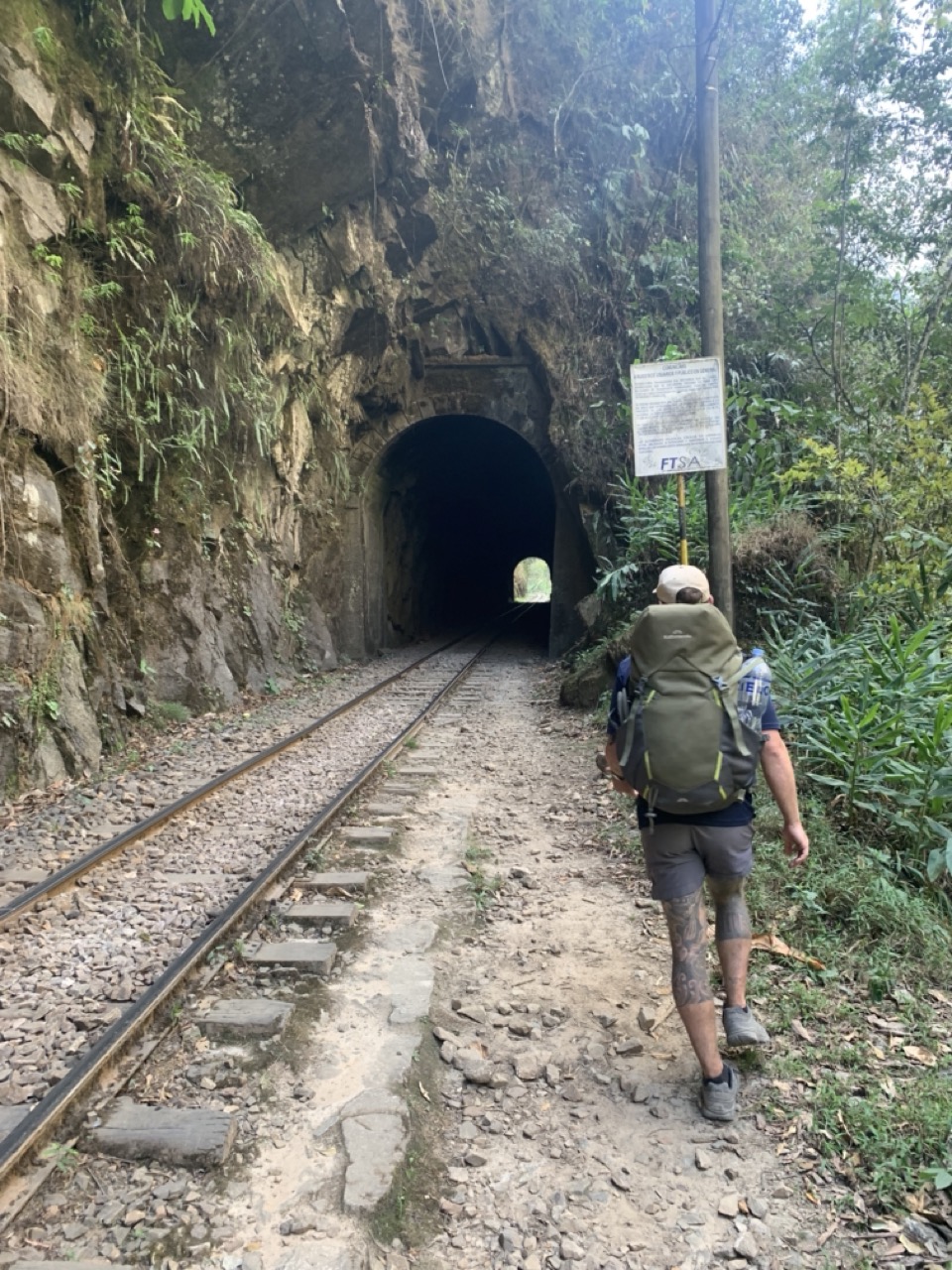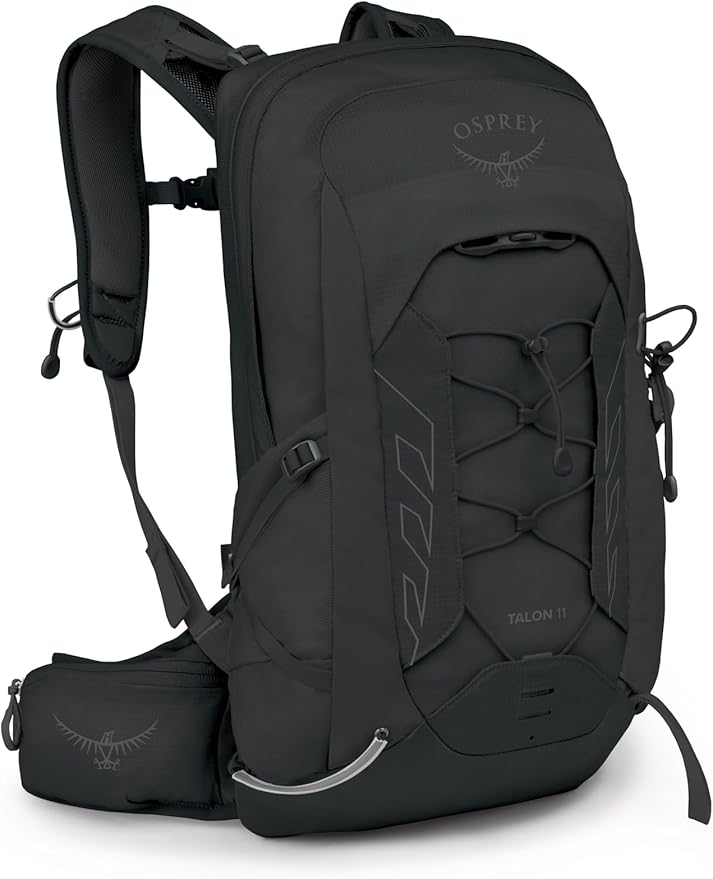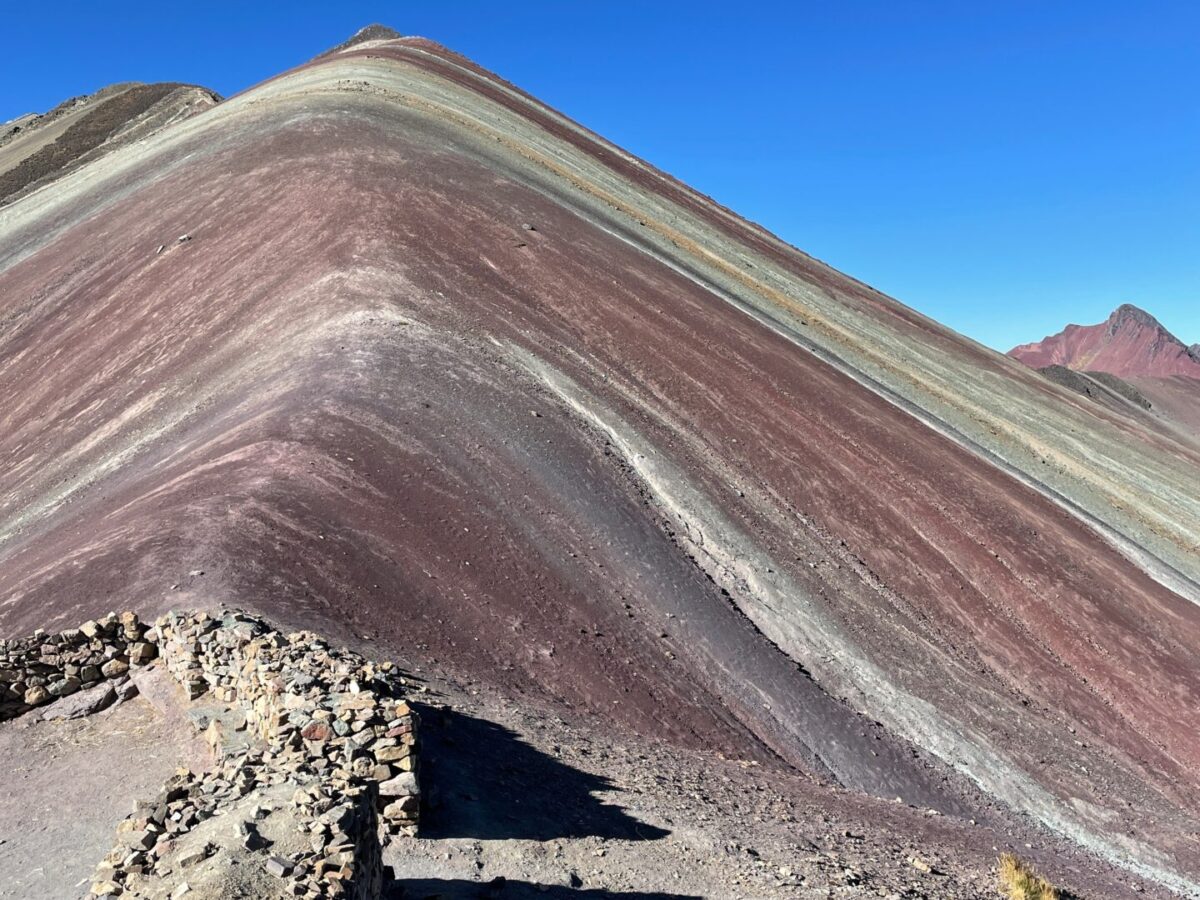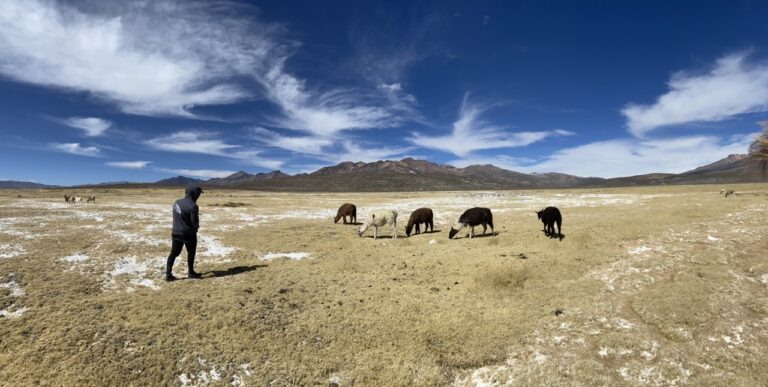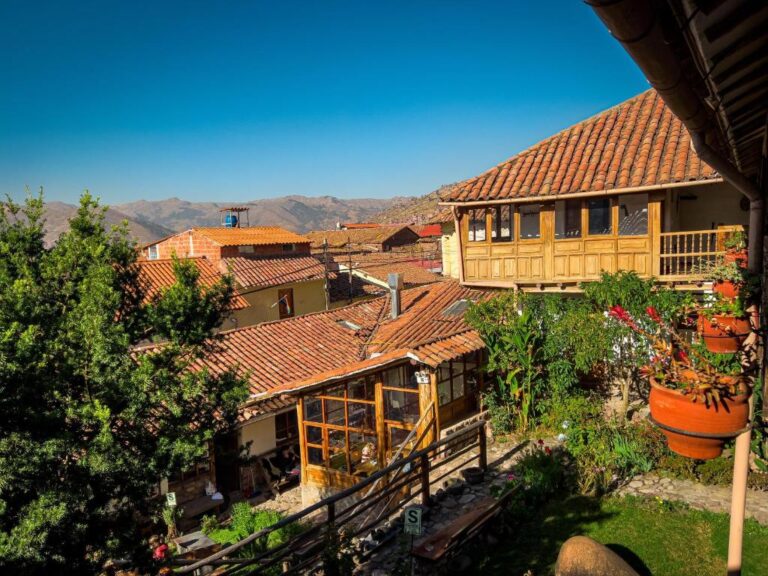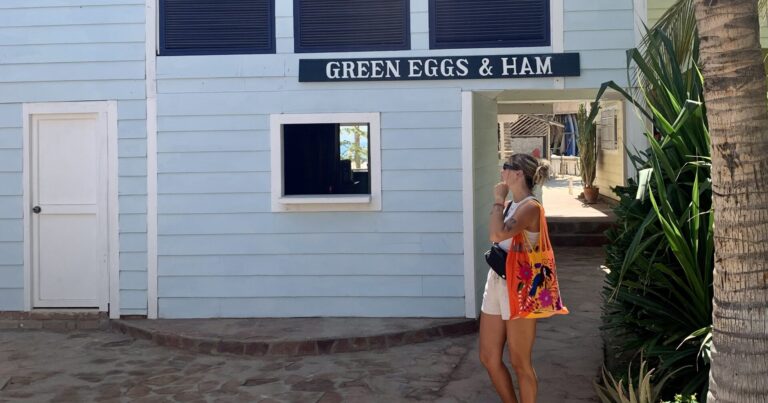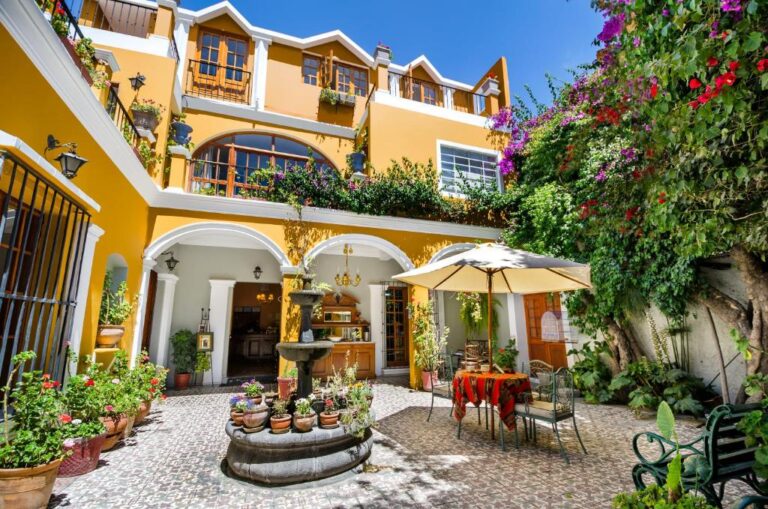Peru Packing List: My Ultimate Peru Packing Guide in 2025
Let me say this right off the bat, if there’s one country where it really pays to do your packing research, I’d say it’s Peru.
You’ve probably already got a rough idea of how rugged and diverse Peru is (and if you’ve read any of my other guides, you know it’s my #1 country to travel to). From trekking to Machu Picchu on the Inca Trail Trek or Salkantay Trek, hiking Rainbow Mountain, surfing in Mancora, spotting condors in Colca Canyon, to chasing anacondas in the Amazon Peru is just so incredibly diverse.
The only problem here is, packing for all of that without bringing your entire wardrobe. That was the challenge for me, at least. One minute you’re freezing in the Andes, the next you’re sweating in the jungle, and somewhere in between, you’re sunburnt at the beach.
So, in this Peru packing list, I’ll walk you through everything I actually brought, what I wish I’d packed (or left behind), and all the gear I’d recommend. Let’s get into it.
In a Rush? Here Are Our Favorite Hotels in Cusco, Peru
⭐️⭐️⭐️ Palacio del Inka – Click here for rates & availability
⭐️⭐️ Costa Del Sol Cusco – Click here for rates & availability
⭐️ Pariwana Hostel Cusco – Click here for rates & availability
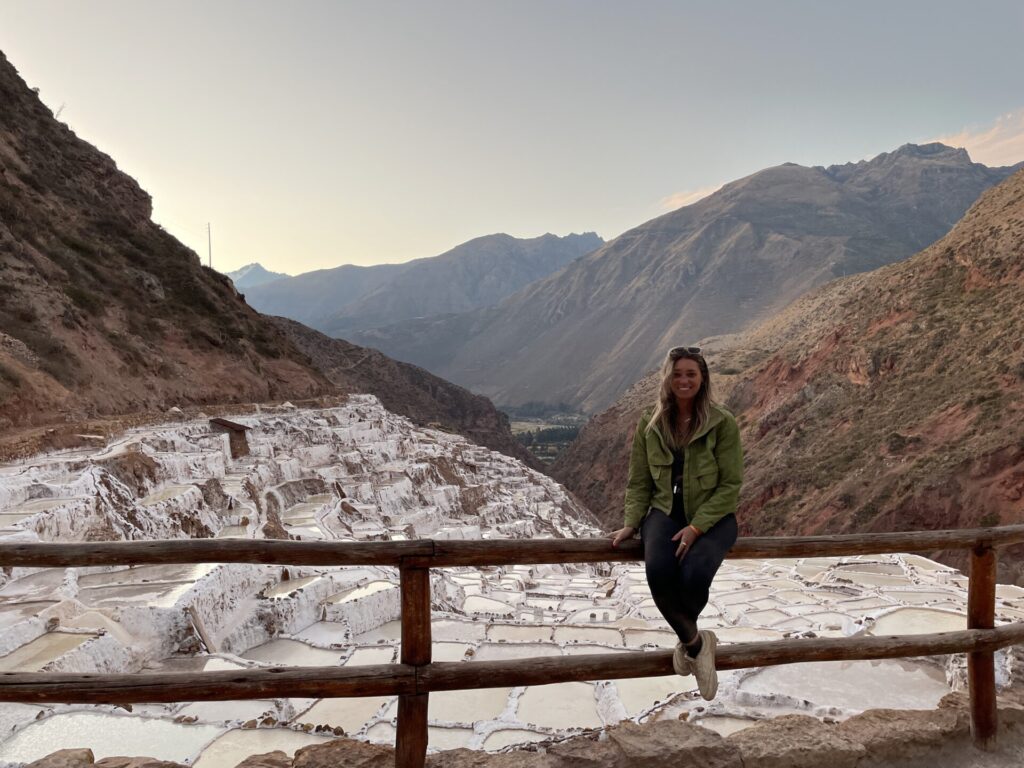
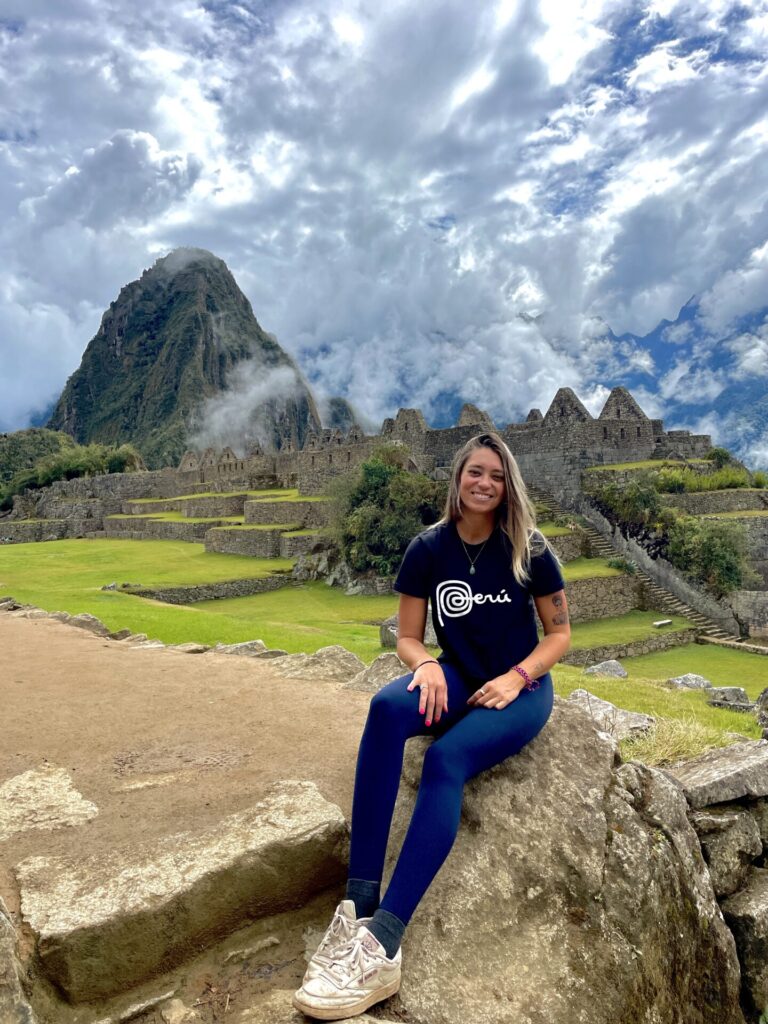

What To Pack For Peru – My Experience
I think I did a pretty decent job packing for my last trip to Peru, but that’s only because I’d been before and knew what to expect. The first time I went though, it was a total disaster. I had no clue how cold certain places in Peru can get. I didn’t even bring a jacket, just a single sweater and ended up having to buy one while I was there.
This time around, I came prepared. I packed a lightweight puffer jacket (my go-to). They’re thin, easy to stuff into a backpack, and surprisingly warm, especially if you layer underneath. That’s kind of my entire packing strategy: bring layers. Long sleeves, hiking pants, thermals. That way, I don’t need a big winter coat or chunky sweaters. I just layer up in the mountains and strip it down on the coast.
As for shoes, I’ve never been a fan of full-on hiking boots. Sure, they’re good for ankle support, but they suck for travel. Too bulky. I always go with trail runners (Salomon is my top pick). They’re light, comfortable, and solid enough for everything from city walking to jungle trekking to hiking the Andes.
My Packing List Peru & Peru Travel Guide
1. Luggage: Suitcase or Backpack for Peru?
Backpack: I’ve been traveling pretty much non-stop for the past six years with a backpack, and that’s just how I do it. It’s more flexible, easier to move around with, and makes hopping into a taxi at a busy bus terminal way less of a hassle. I always travel carry-on only, and for Peru, I’d definitely recommend doing the same. If you go for a backpack, keep it manageable with 50L max. You really don’t need more, trust me.
Suitcase: A suitcase can absolutely work in Peru, it just depends on what kind of trip you’re doing. If you’re backpacking and walking from the bus station in Cusco to your hostel over cobblestone streets? Maybe not ideal. But if you’re on a family vacation with airport pickups, shuttles, and domestic flights all pre-booked, then a suitcase is totally fine.
Daypack: Now THIS is the bit that really matters. A good daypack in Peru is essential. This can be your carry-on or personal item on the plane, but make sure it’s comfortable. Ideally something hiking-focused as Peru is packed with hiking opportunities: the Inca Trail, Salkantay Trek, Rainbow Mountain, Chachani Volcano, Colca Canyon… the list goes on. You’ll be out there for hours, so get something that fits well. Around 15L is the perfect size in my opinion.
I’ve mentioned this in another packing list, but I recently upgraded to the Osprey Atmos 50L and I love it. Not too big, lightweight, and super comfy. For a daypack, I’ve used the Osprey Daylite, but honestly here in Peru I’d go for something with a hip strap, like the Osprey Talon, especially for the hikes. That hip strap makes all the difference.
👉 Check out the Osprey Atmos 50L here
👉 See the Osprey Daylite Daypack we use here
👉 Check out the Osprey Talon with hip strap – definitely my pick for Peru
2. Peru Clothing: What Should I Wear in Peru?
Lightweight Jacket: This might actually be the most important thing you bring. A good lightweight jacket that still keeps you warm is a must. I’d definitely go for a lightweight puffer jacket here, something like the Patagonia Nano Puff, which everyone raves about. I don’t own it (yet), but I’ve heard great things.
Long Pants (Hiking Pants): Long hiking pants are perfect for the Andes and anywhere higher up. They’re usually super lightweight and often water-resistant, and honestly, most of them just look like regular pants so you can wear them even when you’re not on the trail.
T-Shirts: I always take a bunch of t-shirts, either as a first layer or for when I’m down on the coast or in the rainforest. I’d go for quick-dry or breathable fabrics and leave the thick cotton tees at home.
Shorts: Huge fan of Lululemon gym shorts here. I’ve had a couple pairs for years in different colours and they last forever, take up no space in your bag, and are super breathable.
Light Long Sleeves: Definitely take at least one or two. Great for layering in the mountains, but also really useful in the rainforest to protect against mosquito bites and scratches from branches or whatever else you might walk into out there.
Rain Jacket: Always, always bring a rain jacket. Mine folds into a tiny little pouch and lives in the top of my backpack permanently. Peru’s weather can be unpredictable, so it’s just smart to have one on any trip.
Thermals: Doesn’t have to be full-on mountaineering thermals, but some sort of second layer for your legs is a good call. For women, just bring leggings. For guys, thermal bottoms came in super handy when I randomly ended up in snow on one of my hikes.
Swimwear: Absolutely bring swimwear. If you’re heading to the coast like Mancora or Paracas you’ll want it for the beach. But even inland, a lot of hotels have pools, so pack at least one pair just in case.
Hat: Yes. Bring a hat. Actually, bring two. I had a beanie for the cold and a regular cap for sunny days. Both came in handy.
Something Nice: I always have one “nice-ish” outfit with me for a date night or a fancier dinner. For women, that could be a dress. For guys, a white linen shirt is a winner and works for a nicer evening out but also looks good pretty much anywhere in Peru.
The key is layers. That’s really it. The most useful thing I packed was definitely a decent jacket. Since I did a lot of hiking, I wore it constantly. Mine was just a more affordable lightweight puffer and it worked fine, but if I upgrade next time, I’d probably go for the Patagonia Nano Puff.
👉 Check out this lightweight puffer jacket
👉 These are great cheaper alternatives to Lulu Lemon Shorts

3. Hiking Equipment: Do I Need Hiking Boots?
Hiking Shoes: I’m not the biggest fan of hiking boots, mostly because I just don’t want to carry them around in my backpack. But if you have the space and you’re planning to do some of the tougher hikes, then go for it.
Hiking Backpack: Definitely bring a good backpack for your hikes. I’d go for something compact, max 15 liters, but make sure it has a hip strap, that honestly makes such a difference on long hikes.
Gloves: Some hikes, especially Chachani Volcano or the Salkantay Trek, get cold. I’m talking snow-on-the-ground kind of cold. A basic pair of gloves will go a long way. Doesn’t have to be anything fancy, just something to keep your fingers from freezing off.
Trekking Poles: Not a must, but if you’ve got bad knees or are doing something intense like Colca Canyon (lots of uphill/downhill), then trekking poles can really help. You can rent them locally, but if you already have a foldable pair, bring them.
Headlamp: This one’s often forgotten, but a headlamp is super handy, especially if you’re doing early starts for summit hikes or camping overnight. Way better than using your phone flashlight, and it keeps your hands free.
I did quite a few hikes in Peru, including the 5-day Salkantay Trek to Machu Picchu, Rainbow Mountain, a 2-day hike through Colca Canyon, and Chachani Volcano, which is over 6,000m high. Honestly, that’s decent for someone who wouldn’t even call themselves a hiker.
But I never went too crazy with the hiking gear; the only thing I really enjoyed was a good pair of trail runners. I really Like Salomon as a brand for any mountaineering equipment.
👉 Check out the hiking shoes I use
👉 Here’s the hiking backpack I recommend

4. Footwear
Daily Shoes / Trail Runners: A solid pair of daily shoes ( comfortable walking shoes) that also double as your hiking shoes is the way to go. That way, you don’t need to carry an extra pair of bulky hiking boots around with you. Less weight, more flexibility.
Slippers / Flip-Flops: I’d definitely recommend bringing a pair of slippers or flip-flops. Super useful whether you’re heading to the pool, hanging out at the beach, or just stepping outside on hot days.
Personally, I always travel with a pair of the rubber Birkenstocks Eva and I absolutely love them. They’re durable, comfy, they look a bit more put-together than regular flip-flops, and whenever they get dirty you can just rinse them off. For shoes, I swear by the Salomon Speedcross. They’re lightweight, breathable, and perfect for hiking and trekking. Sure, they don’t offer ankle support, but they’ve worked perfectly for me on every trip so far.
👉 These are the rubber Birkenstocks I always travel with
👉 Check out the Salomon Speedcross trail runners I use
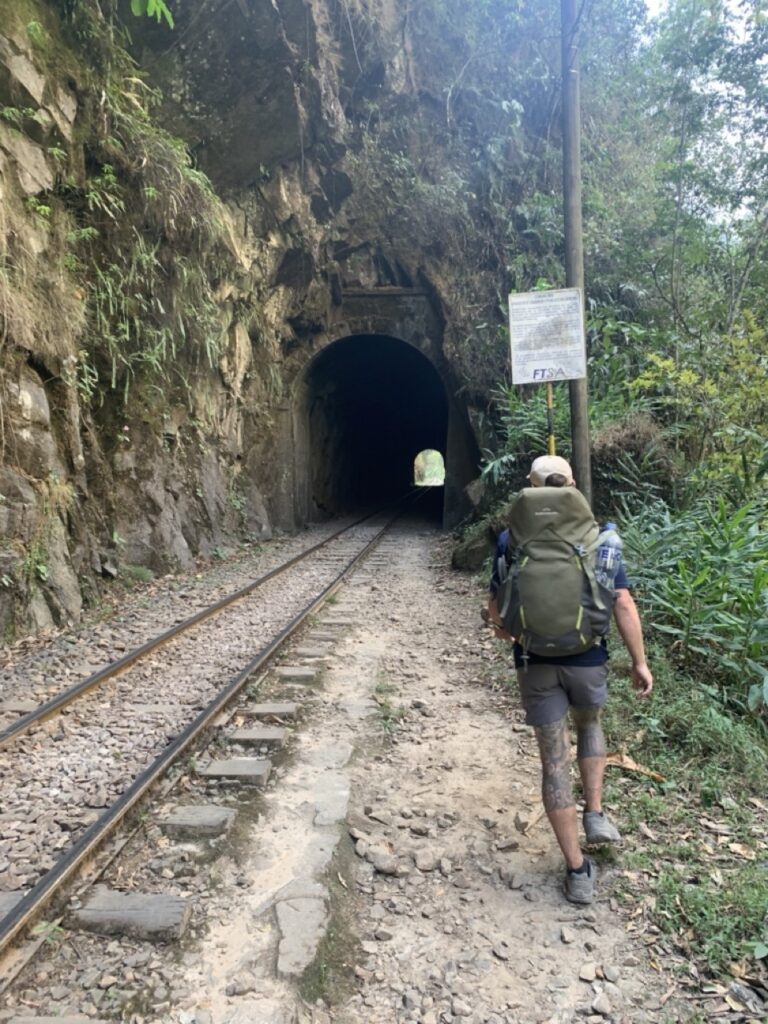
5. Personal Items: My Essentials
Power Bank: Whether you’re doing a multi-day trek or just on a long bus ride through the Andes, your phone battery will die faster than you’d expect. I always bring a small power bank that can charge my phone at least twice.
Universal Travel Adapter: Peru uses different plugs than some countries, so just make sure to bring a universal adapter. I always take the one that has USB-C and USB-A ports too so I can charge multiple things at once.
Sunglasses: It’s sunny up in the Andes and by the coast too, so sunglasses are a must. Just make sure they’re decent ones that actually protect your eyes.
Prescription Medication & Travel Pharmacy: I always carry painkillers, electrolytes, some bandaids, and Imodium. Also altitude sickness tablets, especially if you’re heading to Cusco or planning on hiking soon after arriving. If you wear glasses or contacts, definitely bring spares.
Toiletries: All the basics: toothbrush, toothpaste, deodorant, sunscreen (really important at high altitude), lip balm with SPF, and bug spray. In the rainforest, mosquitoes can be brutal. In the Andes, it’s the sun and dry air. So you kind of get hit from both sides.
Reusable Water Bottle: I always carry one, especially in Peru where you’re going to want to stay hydrated constantly. You can’t drink the tap water, but I usually refill mine with filtered water at hostels or restaurants.
👉 Here is the Reusable Water Bottle I use
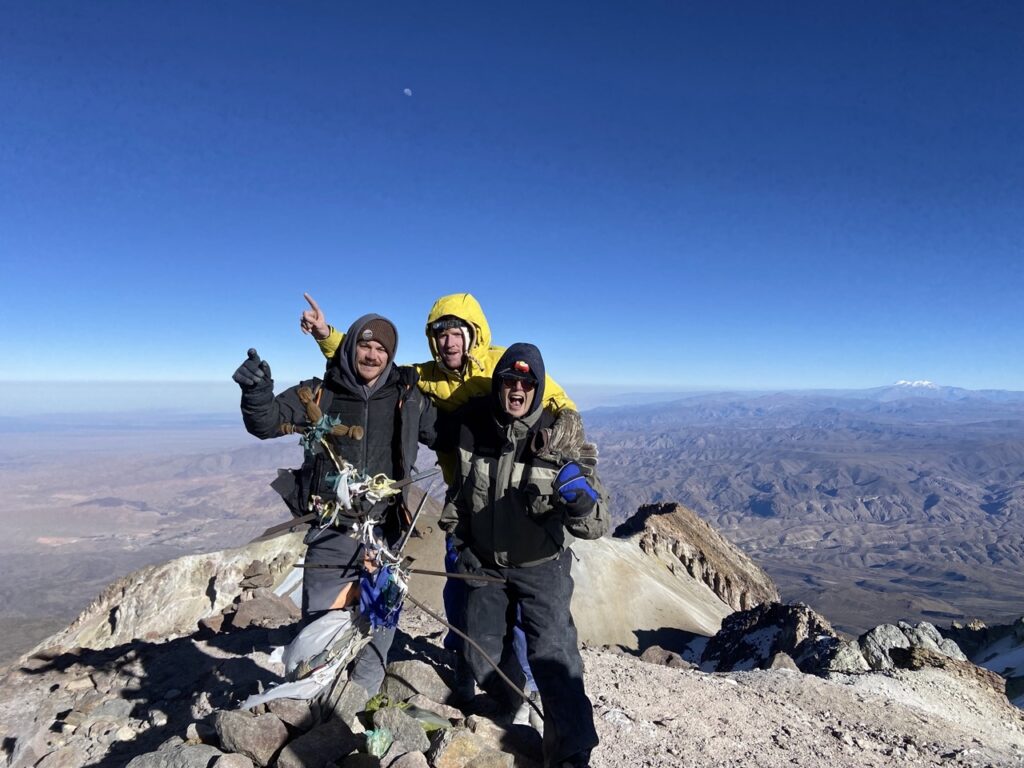
6. Documents
Passport: Should go without saying, but make sure your passport is valid for at least another 6 months, especially for my American friends. And if you’re traveling with family or a group, triple check that everyone has their own valid passport. You won’t get into Peru otherwise.
Visa Documents: Most nationalities, including US, Canada, and EU citizens, don’t need a visa to enter Peru. What you do need is a TAM (Tarjeta Andina de Migración), which is basically a tourist registration card. You’ll either fill it out online or they’ll hand it to you at the airport
Insurance Info: Please don’t travel to Peru without travel insurance. Seriously. I always use SafetyWing Insurance and just keep a little card in my wallet with their contact info, plus emergency phone numbers of friends or family back home. That way, even if I lose my phone or get stuck somewhere, I’ve still got the important stuff on me.
Cash: I’m not usually one to carry loads of cash around, but it does help to have a bit on you. Especially when you’re landing or heading into smaller towns. Just make sure you stash it somewhere separate from your cards.
When it comes to travel insurance, I swear by SafetyWing. It’s both travel and health insurance in one, so it covers everything from doctor visits abroad to lost luggage. I’ve made a few claims over the years and never had any issues, you can always reach them online and they’re super responsive. Definitely recommend.
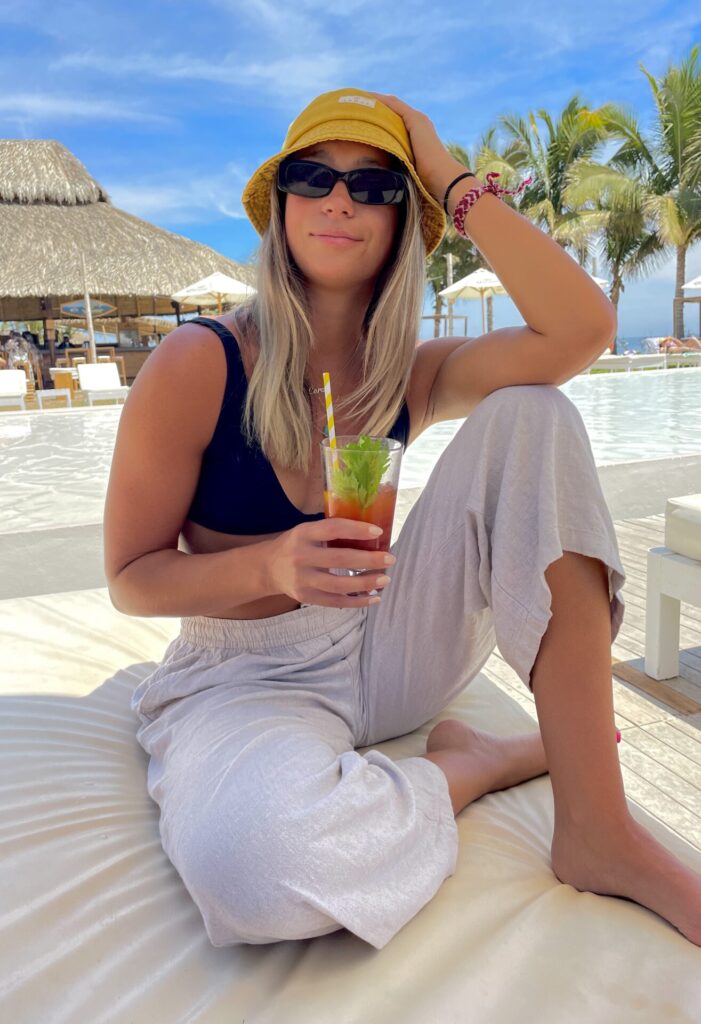
What to Bring to Machu Picchu? ( Machu Picchu Packing List)
If you’re doing the Inca Trail or Salkantay Trek, most of your gear will already be covered in the hiking and packing sections above. But even if you’re just visiting Machu Picchu on a day trip by train, there are a few things you really want to bring:
- Your passport, you need it to enter the site.
- Your ticket, either printed or digital.
- A small daypack, large bags aren’t allowed inside.
- Water, snacks, and sunscreen, there’s no food or drinks sold inside, and the sun can be brutal even on cloudy days.
- Rain jacket or poncho, just in case (weather changes fast).
- And definitely a camera or phone, it’s one of the most iconic places in the world, after all.
If you’ve already packed smart for Peru in general, you won’t need to bring much more for Machu Picchu, just make sure you’ve got the essentials for the day.
FAQs About My Peru Packing List
Peru What to Pack in November?
Well, November is the beginning of the rainy season in Peru, which doesn’t mean it rains non-stop, but the chances of showers and quick downpours are definitely higher. Just pack the same way you normally would, but make sure to bring a rain jacket, you’ll need it.
Is Peru safe?
For the most part, yes. Places like Cusco and Arequipa are super safe and very tourist-friendly. The only place I ever got into a bit of trouble was Lima, it’s a bit more chaotic. I’d recommend sticking to Miraflores or Barranco and not wandering around too much, especially at night.
What is there to do in Peru?
Ha, what isn’t there to do in Peru? From surfing in Mancora, hiking up to Machu Picchu, seeing the Sacred Valley, to going on an Amazon jungle expedition, the list is endless.
Can I get altitude sickness in Peru?
100%, and it’s not something to mess with. If you have time, acclimatize properly. Don’t go straight into big hikes. Spend a few days in Cusco or somewhere at altitude before heading to Machu Picchu, it really makes a difference.
Final Thoughts on My Peru Packing List
Peru is definitely one of those places where packing smart makes a huge difference. The high-altitude parts of the country can get cold, like properly cold so don’t make the same mistake I did on my first trip and just bring swim shorts. You’ll need layers, a warm jacket, and the right shoes.
That said, Peru is also well developed and you can find most essentials if you forget something such as clothes, a towel, swimwear, whatever. Just don’t forget your passport and maybe plan your itinerary ahead of time.
Check Out My Other Peru Travel Guides
Where to Stay in Cusco: The Best Areas & Hotels in Cusco
Cusco Peru restaurants: My Favorite Food Spots in Cusco Peru
Peru Travel Itinerary: My Guide on How to Plan a Peru Itinerary
Things to Do in Arequipa: My Top 8 Things to do in Arequipa
How to Get to Machu Picchu: My Guide on How to get to Machu Picchu
When to Visit Machu Picchu: The Best Month to Visit Machu Picchu
What to do in Cusco: My Top Things to do in Cusco Peru
Altitude Sickness in Peru: How to Survive Altitude Sickness in Peru
Where to Stay in Lima: Best Areas and Hotels in Lima
10 Days in Peru: My 10 Days in Peru Itinerary
Colombia to Peru by Boat: How to Cross the Amazon from Colombia to Peru
Where to Stay in Mancora: Best Hotels to Stay in Mancora Peru
Peru Family Vacation: How to Plan the Perfect Peru Family Trip
Where to Stay in Arequipa: The Best Areas & Hotels in Arequipa Peru
Is Rainbow Mountain Worth it: My Honest Review
How to Get to Huacachina from Lima: My Full Guide
Can You Do Machu Picchu in a Day?: My Machu Picchu Day Trip Travel Guide
Related Articles
Can You Do Machu Picchu in a Day? Costs, Routes & What to Expect (2025)
There are few places in the world that actually live up to the hype, and Machu Picchu is one of them. It’s absolutely breathtaking. Standing there, surrounded by misty mountains and ancient stonework, you instantly understand why it’s one of the Seven Wonders of the World. Naturally, visiting Machu Picchu was a top priority during…
How to Get to Huacachina from Lima: Exactly How I Did It + What I’d Change (2025)
Huacachina is one of the most unique places in Peru and that’s saying a lot considering this country is home to Machu Picchu, the Amazon, and the Andes. But Huacachina stands out. It’s the only natural desert oasis in all of South America, and the tiny village surrounded by huge sand dunes really does feel…
Is Rainbow Mountain Worth It? Avoid the #1 Mistake Most Travelers Make
When I was planning out my 5 days in Cusco Peru before hiking Machu Picchu, I wasn’t totally sure how I wanted to spend my time—but Rainbow Mountain had been popping up on my Instagram feed for at least a year. The colors looked unreal, the alpacas were adorable, and honestly, the FOMO was setting…
